Hospice and Organ Donation Discussions
July 21, 2025
Bridging Compassion and Life-Saving Opportunities in End-of-Life Care

Understanding the Intersection of Hospice and Organ Donation
Hospice care plays a pivotal role in providing comfort and dignity at the end of life. Integrating organ and tissue donation discussions within hospice settings can save lives and foster a sense of legacy for patients and families. Despite its importance, many healthcare providers face challenges in initiating these conversations and navigating complex ethical, legal, and procedural considerations. This article explores best practices for discussing organ donation in hospice, the roles of healthcare professionals, and ways to optimize collaboration for better outcomes.
The Benefits of Organ Donation and Its Impact
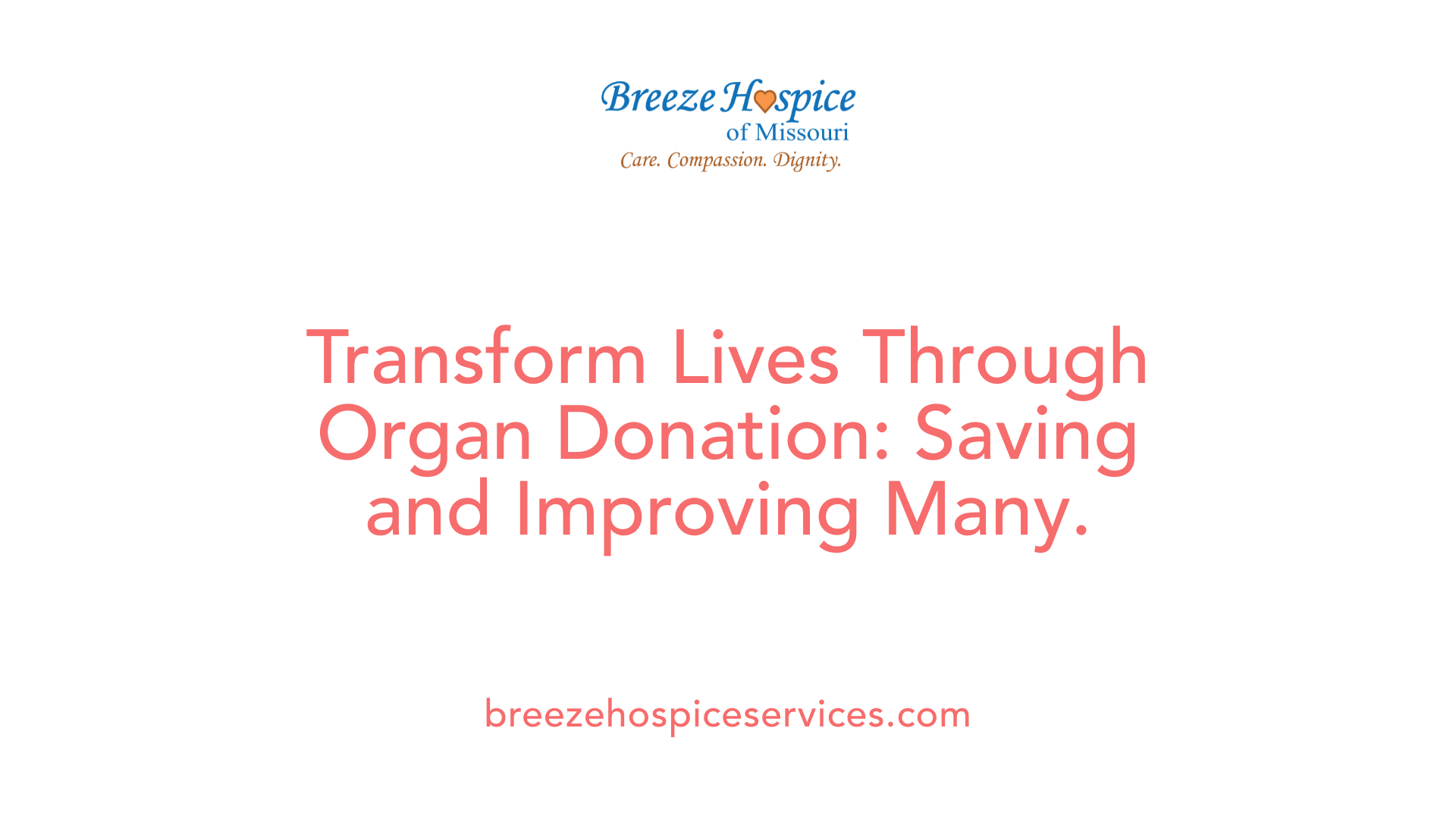
What are the benefits of organ donation for recipients and donors?
Organ donation is a remarkable healthcare success story that directly saves and improves lives. For recipients, it offers a chance to recover from severe organ failure, transforming their prognosis and opening pathways to a healthier, longer life. In the United States alone, about 22 individuals die daily while waiting for the transplant they need. One organ donor can help save up to eight lives and benefit many more through tissues like skin, corneas, bones, and heart valves.
Living donors, such as those donating a kidney or part of their liver, often return to their normal, healthy lives post-donation. This not only increases the available resources for transplantation but also demonstrates the enormous potential for altruism among healthy individuals. Additionally, organ donation provides a profound sense of fulfillment and legacy for donors and their families.
Many religions support organ donation, and the process is straightforward through public registries and family discussions. Knowing that their decision helped save or enhance lives offers donors and families a comforting sense of purpose. Raising awareness and encouraging donation registration are crucial steps in bridging the gap between the need for organs and their availability. Overall, organ donation remains a vital, life-changing act for individuals and society at large.
Legal, Ethical, and Procedural Frameworks for Donation
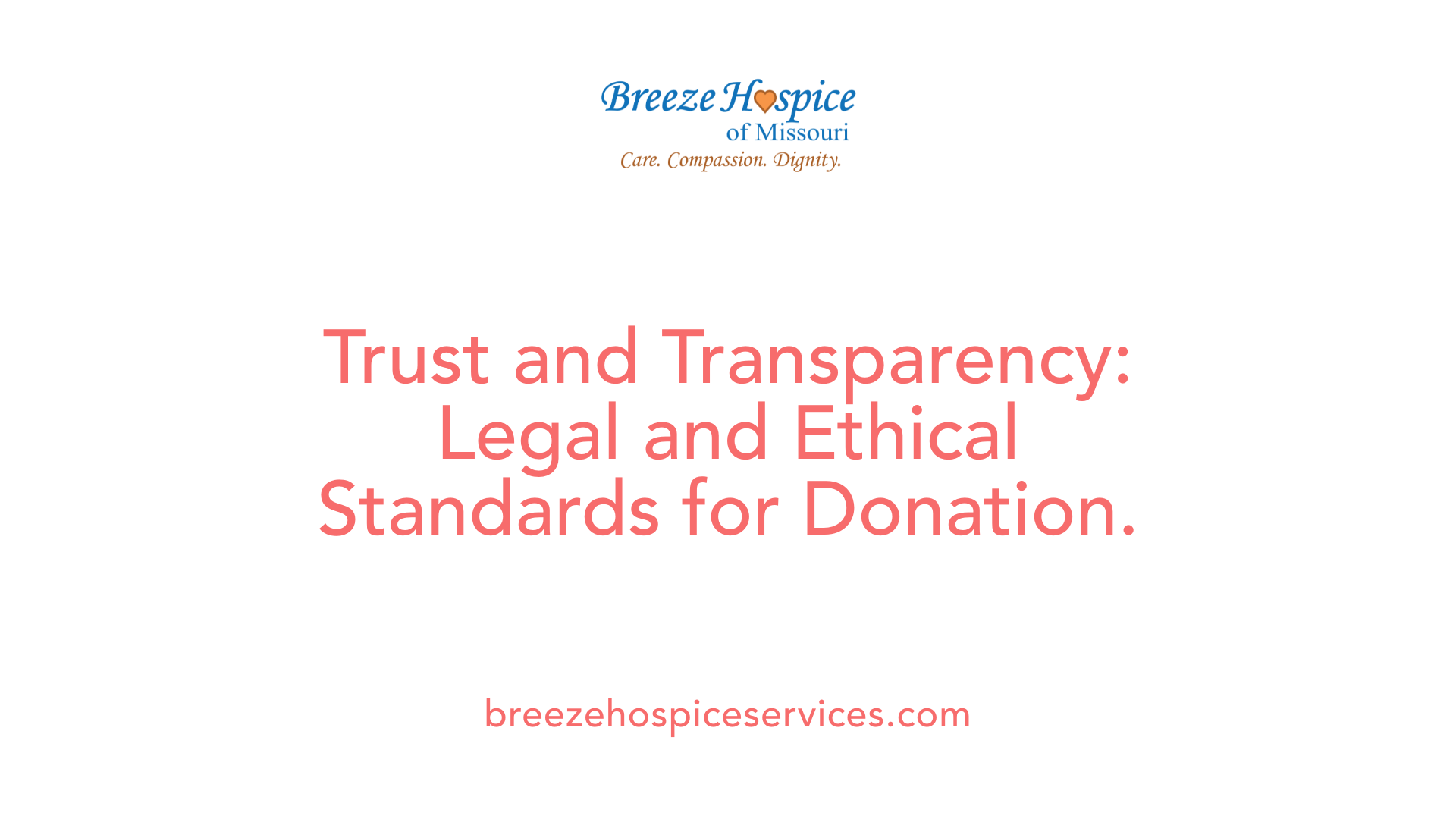
What are the legal and procedural requirements for organ donation, including witness requirements and consent?
Organ donation in the United States is governed by strict federal regulations designed to ensure ethical standards and procedural consistency. The cornerstone of these regulations is the Final Rule, enacted by the U.S. Department of Health and Human Services, which sets national standards for the donation process.
Consent is fundamental; it must be obtained from the individual prior to death through documented registration or from legally authorized representatives if the individual has not registered. In situations where consent or authorization is unclear, the process may involve the use of two witnesses who confirm the donation decision, helping to prevent coercion or misunderstanding.
Organ Procurement Organizations (OPOs) oversee the entire process, verifying eligibility, obtaining consent, and documenting decisions meticulously. They follow standardized protocols for maintaining transparency and fairness in organ allocation. These procedures include thorough medical and legal evaluations to determine suitability, ensuring that organ recovery respects legal mandates and ethical principles.
Overall, these legal and procedural steps are crafted to promote trust, safeguard donor rights, and support the efficient allocation of organs to recipients in need.
The Critical Role of Healthcare Providers and OPOs
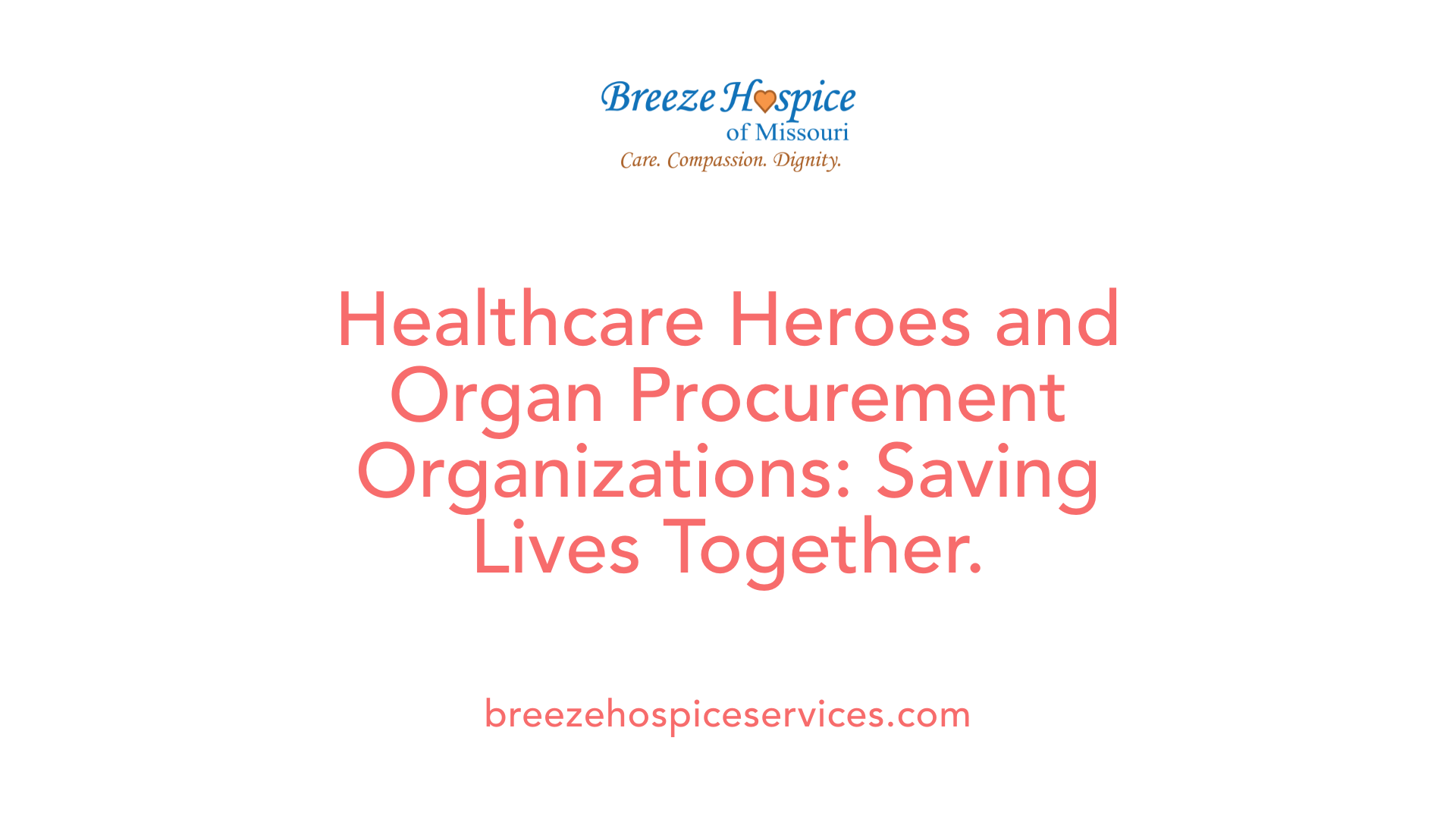
What role do healthcare professionals and organ procurement organizations play in facilitating organ donation?
Healthcare professionals and organ procurement organizations (OPOs) are central to the success of organ donation processes. They evaluate whether potential donors are suitable based on rigorous medical assessments that consider the donor's health, cause of death, and the viability of organs for transplantation. This evaluation ensures that organs are recovered ethically, respecting legal guidelines such as the 'dead donor rule,' which stipulates organs should only be taken from deceased donors.
OPO staff coordinate the entire donation pathway. They manage clinical procedures like organ recovery, foster communication with families, and facilitate consent, primarily through discussions led by trained and certified staff members. These designated professionals are skilled in approaching families with sensitivity, providing clear explanations about the donation process, and addressing their emotional, cultural, and religious concerns.
Moreover, OPOs oversee the allocation of organs, matching them with suitable recipients based on medical compatibility, urgency, and other allocation protocols. They maintain detailed records, support ongoing research to improve donation outcomes, and ensure quality standards are met throughout the process.
Post-donation, these organizations continue to support donor families by providing updates, counseling, and opportunities for shared memorial moments or communication with transplant recipients, thereby fostering trust and honoring the donor’s legacy.
Overall, the collaboration between healthcare providers and OPOs ensures that the donation process is conducted ethically, efficiently, and with compassion, maximizing the number of lives saved.
What are the best practices for discussing organ donation with families of end-of-life patients?
Effective communication with families of end-of-life patients is crucial in organ donation. Best practices include initiating discussions in private, comfortable settings to respect the family’s emotional space. Such conversations should be led by trained and certified healthcare professionals who can convey complex information compassionately and clearly.
Timing is vital; discussions should be decoupled from the notification of death to give families time to process their loss and reflect without feeling rushed or pressured. It’s recommended to wait until the family has had some time to grieve before broaching the subject, but also to introduce the topic early enough to allow meaningful decision-making.
The communication approach should be culturally sensitive and inclusive of families' beliefs and values. Using a respectful, transparent tone and employing models such as REMAP (Reframe, Expect Emotion, Map the Future, Align, Plan) can help guide these conversations.
Involving multidisciplinary team members—including psychosocial, spiritual, and social workers—can help address emotional needs and clarify misconceptions. Providing thorough, honest information about the donation process—including potential benefits and logistical details—builds trust and supports informed decision-making.
Ultimately, building a trusting relationship, respecting family dynamics, and offering ongoing support can promote higher consent rates while honoring the family's emotional journey and cultural practices.
How can hospital teams and OPOs improve collaboration for better donation outcomes?
Enhancing collaboration between hospital teams and OPOs is essential for optimizing organ donation rates. Strategies include early referral of potential donors—ideally immediately upon recognizing the possibility—so that the OPO can evaluate and coordinate in a timely manner.
Hospitals should establish clear guidelines that emphasize the importance of early contact with OPOs for all patients on ventilators or in neurological decline where organ donation might be considered. Consistent communication, including regular multidisciplinary team huddles and debriefs, helps ensure everyone is aligned on the patient’s status and the family’s needs.
Training hospital staff in donation discussions and cultural competence can foster more effective engagement with families. OPOs should provide ongoing education and support to hospital teams, emphasizing the importance of sensitivity, transparency, and respecting cultural practices.
Furthermore, integrating donation discussions into routine end-of-life care planning helps normalize the process. Using standardized scripts and checklists developed collaboratively can ensure consistent, thoughtful conversations.
Finally, establishing dedicated liaison roles within hospitals and OPOs can streamline communication and provide a point of contact for families, reducing confusion and fostering trust.
How do these practices collectively influence donation rates?
Implemented together, these approaches can significantly increase organ donation consent rates. During sensitive discussions, compassion, professionalism, and cultural understanding foster trust, making families more comfortable with donation decisions.
Early referrals and proper training allow for timely evaluations and discussions, reducing missed opportunities.
A collaborative, transparent, and supportive environment ensures families feel respected and informed, addressing misconceptions and emotional barriers.
In turn, higher consent rates contribute to increased organ availability, helping to alleviate shortages and save more lives.
| Aspect | Implementation Strategy | Expected Outcome | Additional Notes |
|---|---|---|---|
| Evaluation of Donor Suitability | Rigorous assessment protocols and early referrals | Efficient identification of viable donors | Follow legal and ethical standards |
| Family Support & Communication | Certified staff-led discussions, cultural sensitivity, emotional support | Increased family consent and trust | Use models like REMAP |
| Staff Training & Certification | Regular workshops, competency assessments | Well-prepared staff capable of sensitive communication | Supported by organizational policies |
| Collaboration & Coordination | Multidisciplinary team meetings, use of scripts, liaison roles | Seamless donation process | Enhances clarity and reduces delays |
This integrated approach strengthens the entire donation infrastructure, ensuring respectful, timely, and effective donation processes that benefit patients needing transplants and their families.
Tissue and Corneal Donation in Hospice Care
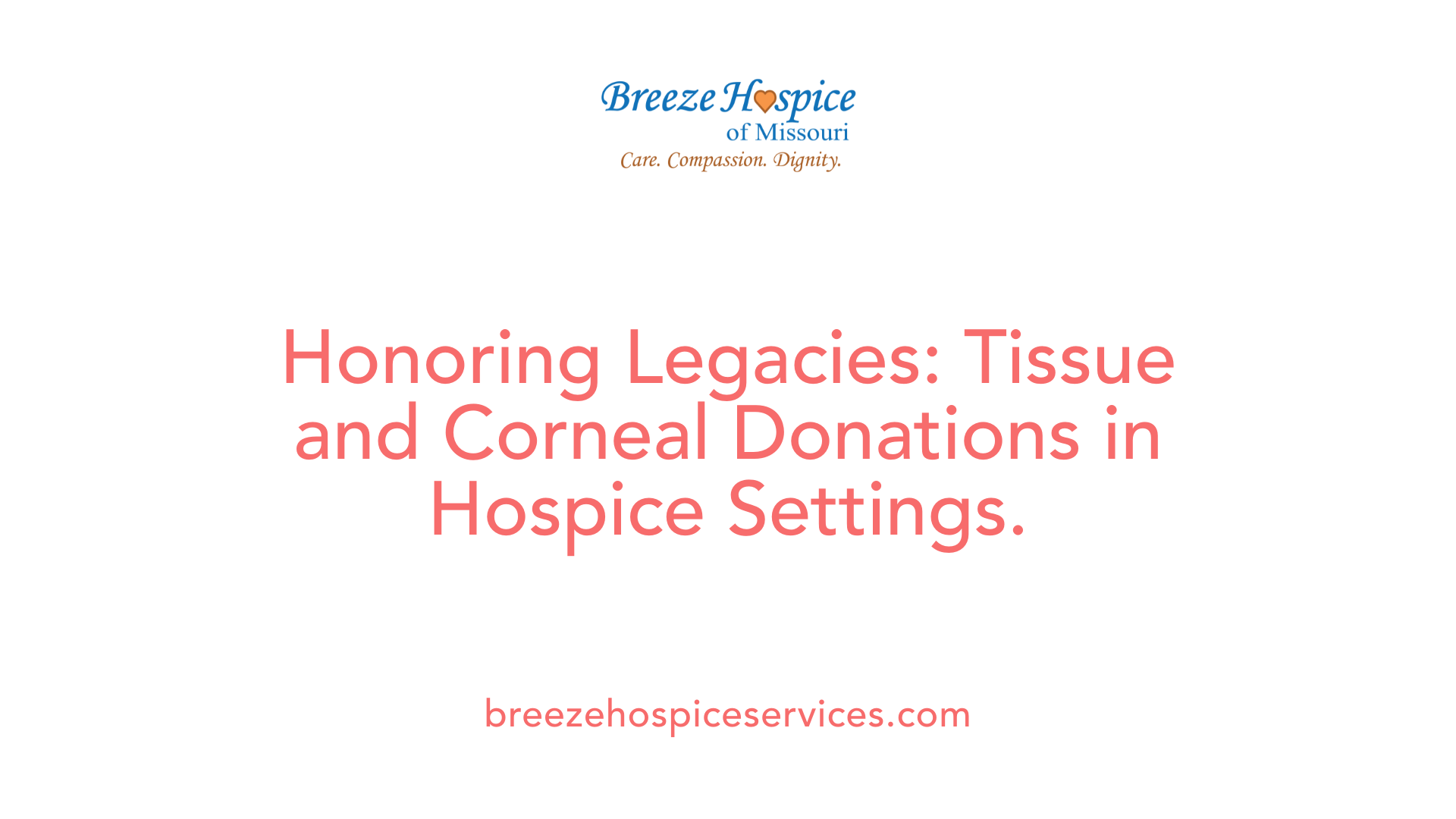
Are hospice patients eligible to donate organs or tissues after death?
Hospice patients typically are not candidates for organ donation because they are not usually on life-support measures like ventilators at the time of death. However, tissue donation remains a viable and meaningful option. Tissues such as corneas, skin, bone, heart valves, and blood vessels can be donated and used in various medical treatments to restore vision, heal wounds, and replace damaged tissues.
The process involves a structured referral and recovery system, often supported by organizations like the Hospice Foundation of America. When a hospice patient is nearing end-of-life, healthcare providers can collaborate with designated tissue banks and organ procurement organizations (OPOs) to evaluate eligibility.
Participating in tissue donation allows families to find comfort and create a lasting legacy amid their grief. Hospital staff and families can consult with donation experts to understand better which tissues are suitable and how the donation process unfolds, ensuring that this option is discussed in a compassionate, timely manner.
How do tissue and organ donation differ?
Tissue and organ donations serve different purposes and follow distinct protocols.
| Aspect | Organ Donation | Tissue Donation | Additional Details |
|---|---|---|---|
| Eligibility | Usually requires brain death or circulatory death with life support | Often possible after circulatory death without extensive life support | Organs are transplanted immediately; tissues can be stored longer |
| Timeframe | Organs are recovered within hours of death | Tissues can be recovered up to 24 hours post-mortem | Tissue storage allows for more flexible timing |
| Types of tissues | N/A | Corneas, skin, bones, heart valves, blood vessels | Tissues can benefit multiple recipients |
| Surgical process | Usually occurs in operating rooms | Recovery in specialized tissue banks | Different surgical techniques and team involvement |
Understanding these differences helps healthcare providers and families make informed choices about donation options suited to the patient’s condition.
What are the logistics and referral processes for tissue donation?
Hospitals and hospices play a crucial role in facilitating tissue donation. The process generally begins with early identification of potential donors and prompt referral to local OPOs or tissue banks.
Referral procedures involve providing specific information such as:
- Patient demographics
- Medical history
- Cause of death
- Consent status
Hospices can coordinate timely referrals, ideally within 1 hour of death, especially if death occurs in a facility or in a situation where donation is possible and desired.
Hospitals and hospices need to follow established protocols to maintain tissue viability. The ongoing collaboration involves communication between healthcare teams and donation organizations, ensuring the donor is prepared appropriately.
The process also includes providing psychosocial support to families, educating them on donation options, and confirming consent. Transparent communication and respect for cultural preferences enhance the donation experience.
Impact of tissue donations like corneas, skin, and bones
Tissue donations significantly impact recipients worldwide. For example:
- Corneal transplants can restore sight in individuals with corneal blindness.
- Skin grafts help patients with burns or wounds heal faster.
- Bones and connective tissues are used in surgeries to repair fractures and deformities.
- Heart valves can replace damaged valves, saving lives without the need for lifelong anticoagulation.
In the context of hospice care, these donations provide a meaningful way for families to honor their loved ones. Moreover, tissue donations can help lessen the shortage of transplantable tissues, which is critical given the increasing demand globally.
Benefits for families and recipients
Families often find solace in donation, seeing it as a way to create a positive legacy. It provides a sense of hope and purpose during a difficult time, helping with the grieving process.
Recipients of tissues benefit from improved health outcomes, enhanced quality of life, and sometimes the restoration of essential functions like sight or mobility.
Furthermore, tissue donation fosters a culture of altruism and community support, emphasizing the importance of giving even after death.
| Aspect | Family Benefits | Recipient Outcomes | Community Impact |
|---|---|---|---|
| Emotional | Comfort in helping others | Improved health and function | Increased awareness and donation rates |
| Psychological | Sense of meaning and legacy | Better recovery and quality of life | Reduces shortages and saves lives |
| Social | Participating in meaningful rituals | Restoring sight or health | Promoting a culture of donation |
Final thoughts
Hospice care providers and families should consider tissue donation as a valuable option upon death. With proper coordination, timely referral, and compassionate communication, tissue donation can save lives and restore functions, offering a profound legacy for the donor and comfort for loved ones.
Efforts to increase awareness and streamline processes—together with ongoing research—will continue to enhance the availability and impact of tissue donations, ultimately benefiting individuals and communities worldwide.
For more detailed information, healthcare providers and families are encouraged to consult resources on donation protocols, tissue bank requirements, and support services available through local OPOs and national organizations.
Integrating Donation Discussions into End-of-Life Care
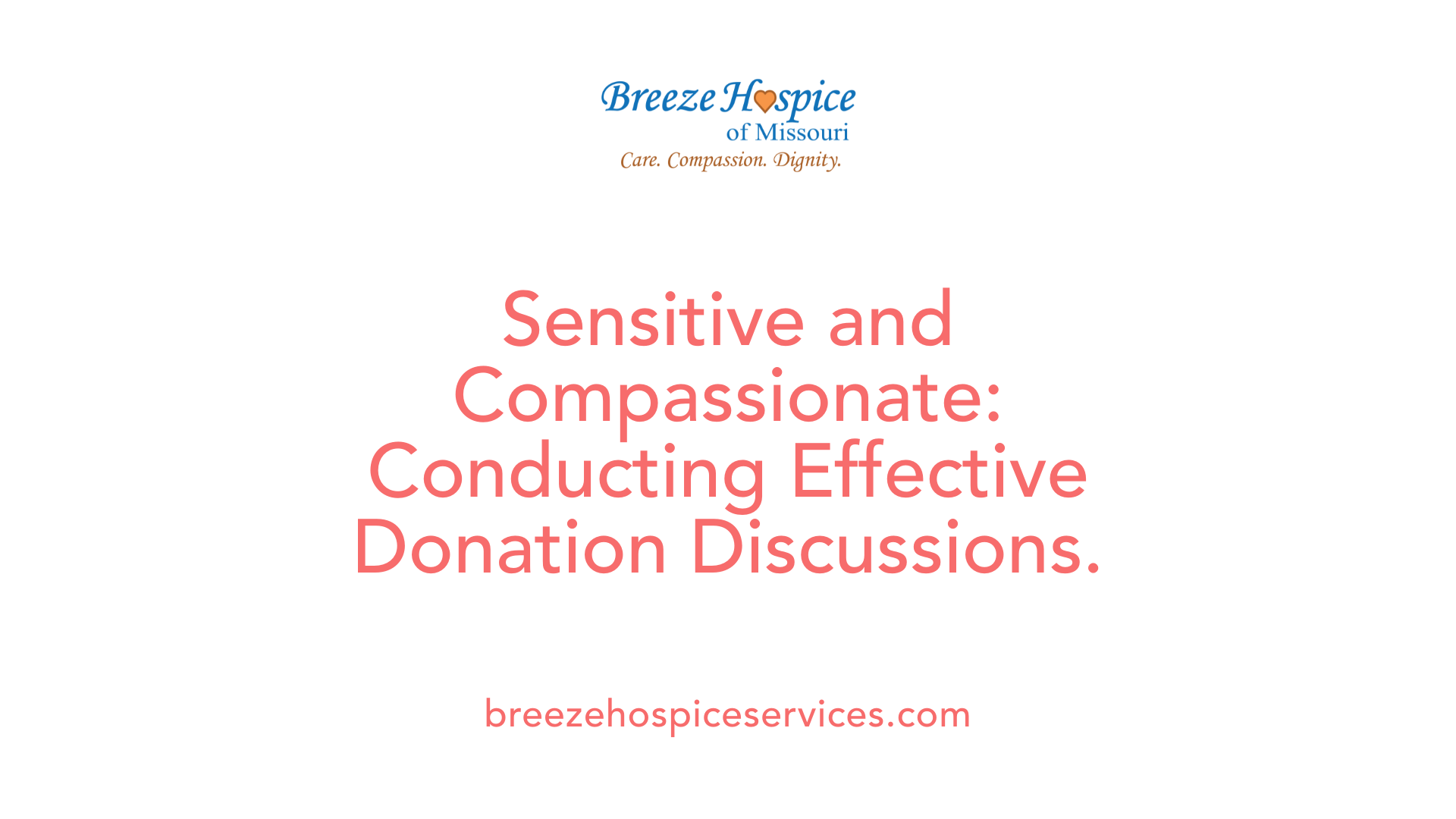
What are the best practices for discussing organ donation with families of end-of-life patients?
Effective communication about organ donation is vital to ensure families understand their loved one's wishes and the benefits of donation. Best practices include initiating conversations in private, comfortable settings, and involving trained healthcare professionals such as clinicians with certified donation communication training or representatives from Organ Procurement Organizations (OPO). Timing is crucial; discussions should be ideally decoupled from the notification of death, allowing families time to grieve and process the loss.
The discussion should be approached with compassion, clarity, and cultural sensitivity, providing comprehensive information about the donation process, its potential to save or heal lives, and addressing misconceptions or concerns.
A multidisciplinary team including psychosocial and spiritual support can help families navigate these complex decisions. Respect for cultural, religious, and personal beliefs fosters trust and can improve consent rates. Healthcare providers are encouraged to communicate transparently, emphasizing respect and understanding, which ultimately enhances the donation experience for families and supports their emotional well-being.
How can structured communication models improve donation conversations?
Structured models like R.A.T.E. (Respect, Acknowledge, Trust, Empower) and REMAP (Reframe, Expect Emotion, Map the Future, Align, Plan) serve as guides to facilitate sensitive yet effective donation discussions. These frameworks encourage healthcare providers to build trust early, acknowledge families' emotions honestly, and provide space for emotional expression.
Using R.A.T.E., clinicians demonstrate genuine respect, acknowledge family feelings, foster trust through honesty, and empower families with clear information. REMAP offers a step-by-step process to reframe conversations positively, anticipate and validate feelings, explore future possibilities, align family and professional goals, and collaboratively plan next steps.
Implementing these models enhances communication consistency, helps decouple donation requests from the dying process, and ensures families feel supported emotionally and spiritually. Training staff in these approaches increases their confidence, which can lead to higher donation consent and a more positive family experience during this challenging time.
Maximizing Donation Potential and Ensuring Ethical Practice
What is the process for determining patient suitability for organ donation?
The evaluation of whether a patient is suitable for organ donation involves several critical steps. Initially, healthcare providers assess the patient’s medical condition to determine if they meet established criteria for donation, which hinges on the confirmation of death either through neurological criteria—commonly called brain death—or circulatory criteria—cessation of heartbeat and respiration.
This process adheres to accepted medical standards and legal definitions, such as those outlined in the Uniform Determination of Death Act (UDDA). Clinicians carefully verify death through meticulous assessments, ensuring that the patient has truly undergone irreversible loss of brain function or circulatory and respiratory functions.
Hospital protocols require coordination with the designated Organ Procurement Organization (OPO), which conducts additional evaluations to confirm the patient’s medical suitability for donation. This includes reviewing the patient’s medical history, examining cause of death, and ruling out contraindications such as infections or malignancies that preclude donation.
Legal eligibility is also verified during this process. Hospitals and OPOs ensure compliance with the relevant laws, such as the Uniform Anatomical Gift Act, which stipulates consent requirements, whether through a donor registry, donor cards, or family authorization.
Once the patient’s death is confirmed, and all medical, legal, and ethical criteria are met, the process proceeds with obtaining consent and fulfilling ethical obligations. Respectful and transparent communication with the family is essential for maintaining trust and honoring the donor’s wishes.
This thorough approach aims to maximize donation opportunities while safeguarding the rights and dignity of the patient and ensuring adherence to legal and ethical standards at every step.
| Step | Description | Details |
|---|---|---|
| Medical assessment | Confirm death and suitability | Use neurological and circulatory criteria |
| Legal verification | Ensure consent and eligibility | Check donor registry and family authorization |
| Coordination | Engage with OPO | Conduct further evaluations and coordinate procurement |
| Ethical considerations | Respect patient and family wishes | Ensure transparent communication and follow legal guidelines |
Effective assessment and collaboration between clinical teams and OPOs are vital for optimizing donation outcomes ethically and responsibly.
Promoting Ethical, Compassionate, and Effective Donation Practices
Integrating organ and tissue donation discussions into hospice and end-of-life care requires a careful balance of medical, legal, ethical, and emotional considerations. With informed, compassionate communication, trained staff, and strong collaboration between healthcare providers and organ procurement organizations, these conversations can transform tragedy into a legacy of hope and healing. Ongoing education, adherence to best practices, and respect for patient and family wishes are essential in ensuring that donation processes uphold dignity, transparency, and fairness. By embracing these principles, hospice teams can help address critical organ shortages, save lives, and offer dying patients and their families a profound gift of generosity.
References
- Discussing Organ Donation With Families
- Effective End-of-Life Conversations: A Collaborative Approach ...
- Organ Donation and Hospice
- Hospice Patients Tissue Donations | Gift of Life Michigan
- Information for Hospice & Long-Term Care Partners - LifeSource
- How Should Physicians Manage Organ Donation after the ...
- Organ donation – the gift of life | Rowcroft Hospice



































































































